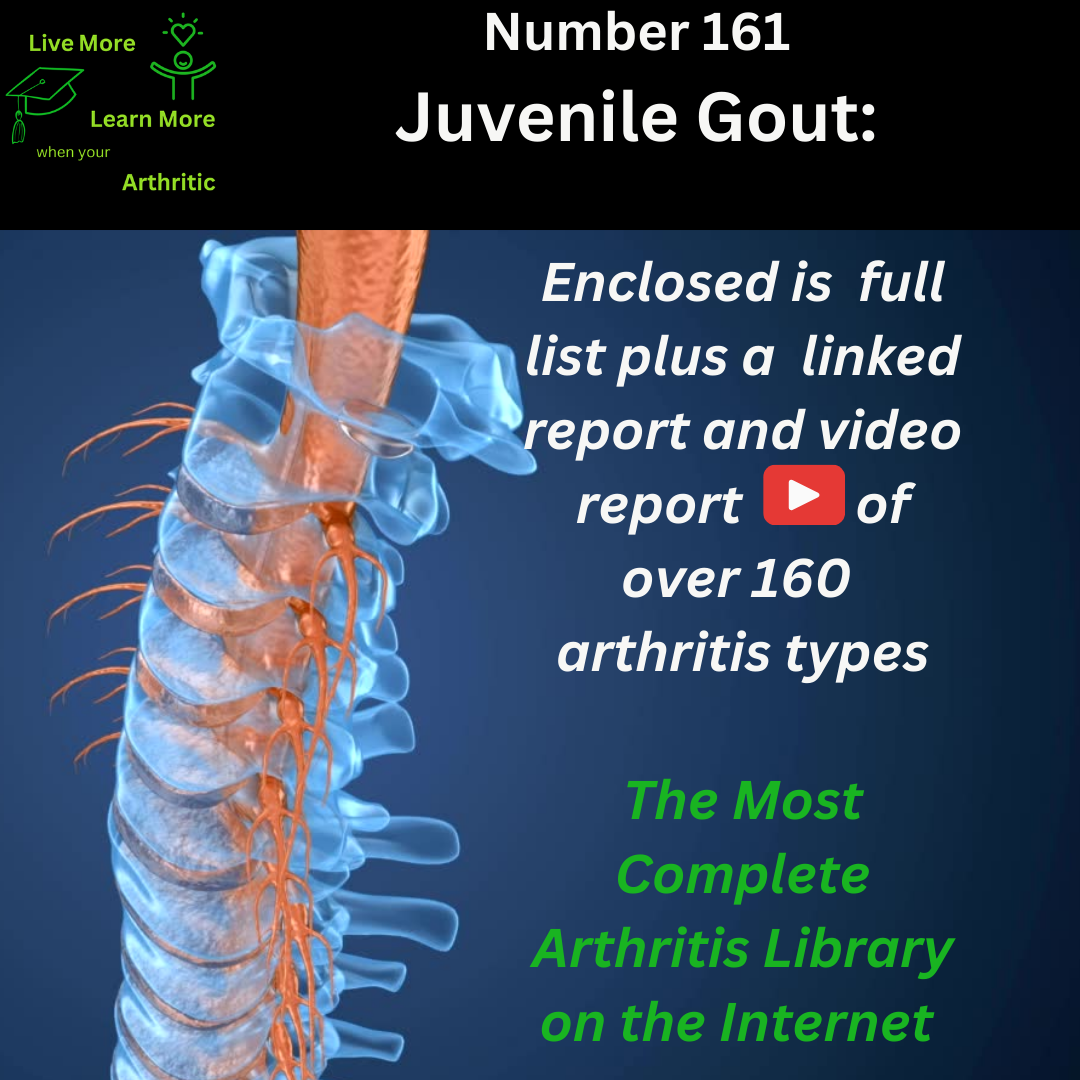
Juvenile Gout: Number 161 Type of Arthritis
Understanding Juvenile Gout: An In-Depth Exploration
Juvenile gout, a lesser-known form of arthritis, presents unique challenges and overlaps with other inflammatory conditions. Unlike more common types of juvenile arthritis, gout is characterized by sudden and severe attacks of pain, swelling, and redness in the joints, often caused by uric acid crystal deposits. This condition primarily affects males, and while it’s relatively rare in children, its impact on overall health can be significant.
 Inflammatory Characteristics and Comorbidities
Inflammatory Characteristics and Comorbidities
Gout is indeed classified as an inflammatory arthritis due to its association with inflammation caused by uric acid crystals. While it’s distinct from other juvenile arthritic conditions like juvenile idiopathic arthritis (JIA), there can be overlaps with other forms of arthritis in terms of symptomatology and treatment strategies.
Affected Body Parts and Joint Involvement
The joints most commonly affected by juvenile gout include the big toe, ankle, knee, and wrist. However, gout can potentially impact any joint in the body. The inflammation and pain associated with gout attacks can severely limit mobility and cause significant discomfort.
Remission Possibilities and Disease Description
Gout can go into remission with proper management and lifestyle changes. During remission, symptoms may disappear, but it’s crucial to maintain treatment to prevent flare-ups. The disease is caused by elevated levels of uric acid in the blood, leading to the formation of sharp urate crystals in joints and tissues.
Triggers and Symptoms
Common triggers for gout include certain foods (like red meat, seafood, and alcohol), dehydration, obesity, and certain medications. Symptoms of juvenile gout include sudden and intense joint pain, swelling, redness, and warmth around the affected joint. Limited range of motion is a common issue during flare-ups.
Age of Onset and Lifespan Impact
While gout typically affects adults, juvenile onset can occur in rare cases, often in adolescents. The condition is associated with increased risks of cardiovascular disease and kidney complications, which can impact lifespan if not managed effectively.
Autoimmune Nature and Risk Factors
Gout is not considered an autoimmune disorder, unlike some forms of arthritis like rheumatoid arthritis. Risk factors include family history, obesity, diet high in purines, certain medical conditions (like hypertension and diabetes), and medications.
Complications and Inflammation
Swelling and inflammation are hallmark features of gout due to the body’s immune response to uric acid crystals. Joint tenderness and cartilage damage can occur during severe flare-ups, leading to reduced range of motion and joint deformities over time.
Quality of Life and Proactive Approaches
A proactive approach to managing juvenile gout involves dietary changes, weight management, staying hydrated, and taking medications as prescribed. Lifestyle modifications, such as regular exercise and avoiding trigger foods, can significantly improve quality of life and reduce the frequency of flare-ups.
Differentiation from Primary Arthritis
Juvenile gout differs from primary arthritis (e.g., JIA) primarily due to its distinct causes and symptom presentation. Unlike JIA, which involves autoimmune processes affecting the joints, gout stems from metabolic disturbances leading to uric acid accumulation.
Interconnected Diseases and Conditions
Understanding gout’s comorbidities is crucial for comprehensive management. Gout is often associated with metabolic syndrome, diabetes, hypertension, and cardiovascular disease due to shared risk factors and underlying mechanisms. Awareness of these interconnected conditions is vital for holistic care.
 Possible Complications and Gender Prevalence
Possible Complications and Gender Prevalence
Complications of juvenile gout include chronic joint damage, tophi (uric acid deposits under the skin), kidney stones, and increased risk of heart disease. While gout predominantly affects males, women can also develop the condition, especially after menopause due to hormonal changes.
In summary, juvenile gout presents unique challenges and overlaps with other inflammatory conditions, affecting joints and overall health. By adopting a proactive approach to management, individuals can mitigate symptoms, improve quality of life, and reduce long-term complications associated with this complex form of arthritis. Understanding the interconnected nature of gout with other health conditions is essential for comprehensive care and optimal outcomes.

